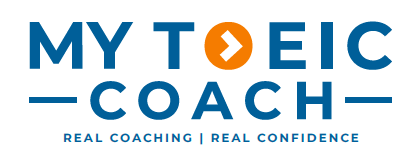Mind Maps vs Flashcards: Which Works Better for TOEIC Vocabulary?
🗝 Before you read:
Look at the article title and image. What do you think this article will be about?
When it comes to learning vocabulary for the TOEIC, most students automatically reach for flashcards. They're simple, easy to make, and familiar. But are they the most effective method?
Accelerated Learning research suggests that mind mapping might be a better option — especially for retention and usage. Mind maps work by visually organizing related words and phrases around a central idea. This builds connections between words and helps learners understand context, not just meaning.
For example, instead of just memorizing the word negotiate, a mind map would include related words like deal, contract, agreement, and terms. You can even add visual elements or example phrases. This creates a stronger memory trace and gives you practical usage examples when speaking or writing.
Flashcards can be helpful, but they often encourage passive memorization. Mind maps force you to actively think about how words relate, how they function, and where they belong in business English contexts — just like the TOEIC test.
📋 Understanding meaning
How well do recall and understand?
Why do most students choose flashcards?
What does a mind map show that flashcards usually do not?
What is an example of a word and its related terms mentioned in the article?
How does a mind map help with context?
What is one weakness of flashcards?
Why are mind maps better suited to business English situations like TOEIC?
🧠 Building Vocabulary
Match the meaning word
Retain
Distraction
Ritual
Multitasking
Concentrate
A .Focus
B. Routine
C. Doing many things at once
D. Remember
E. Interruption
✍️ Part 6 – Text Completion
Instructions: Choose the sentence that best fits the blank in the text.
Passage 1 – Blog Post Excerpt
I used to make long vocabulary lists and try to memorize them.
[ ]
But when I needed to use the words, I couldn’t remember how they connected.
Which sentence best fits the blank?
A. My teacher told me to stop learning.
B. Then I discovered mind mapping and everything changed.
C. I ignored most of the words.
D. I switched to grammar drills instead.
Passage 2 – Blog Post Excerpt
Business English has so many words that link together in phrases and categories. That’s why I always use mind maps when preparing for the TOEIC. [ ]
Which sentence best fits the blank?
A. It helps me group and understand new vocabulary.
B. It’s better to avoid difficult words.
C. It makes grammar very hard.
D. It limits how many words I can study
✍️ Part 5 – Incomplete Sentences
Instructions: Choose the best answer to complete each sentence.
A mind map helps learners _____ how words are connected.
A. ignore
B. memorize
C. visualize
D. translateFlashcards are _____ but may lead to passive learning.
A. powerful
B. useful
C. confusing
D. visual
✍️ Part 7 – Reading Comprehension
Reading Passage
When you prepare for TOEIC vocabulary, it’s important to study how words are used, not just what they mean. Mind maps help learners see relationships between terms — especially business-related ones. Flashcards may be quick to review, but mind maps build stronger, longer-lasting associations. They also help with word families, phrases, and real-world examples.
ALT coaches recommend using both methods, but starting with mind maps to build connections before testing yourself with flashcards.
What does the article suggest is more effective for long-term learning?
A. Flashcards
B. Mind maps
C. Grammar drills
D. GuessingWhat is one benefit of mind maps?
A. They take less time
B. They help with word relationships
C. They are easier to carry
D. They are better for speaking onlyWhy are word families important?
A. They help group ideas logically
B. They make listening easier
C. They are used in all tests
D. They improve spellingWhat is the suggested study order?
A. Grammar → Mind map → Flashcard
B. Flashcard → Mind map → Video
C. Mind map → Flashcard
D. Flashcard only
🧠 Self-Reflection
The most important step in any lesson is not just completing the task, but making meaning from it. Take 2–3 minutes to reflect on your learning today. You don’t need perfect answers — just honest ones. This is how high performers grow.✍️ Write in a notebook, type below, or say it aloud — what matters is doing it.
What did I understand better after reading this article?
What mistakes or surprises helped me learn?
🧩 What new words or phrases did I discover?
🔁 How can I use these words in the next 7 days to help remember them?
What is one action I will take tomorrow to improve my TOEIC skills?


